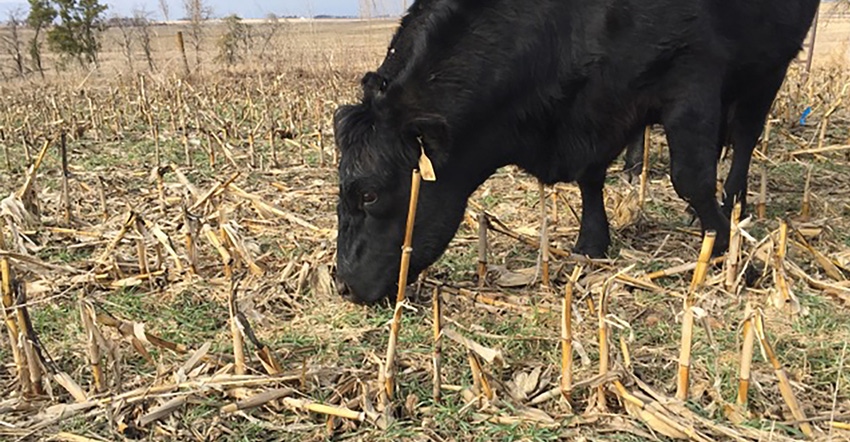New PFI factsheets summarize restrictions when grazing cover crops on fields where herbicides were applied.
April 10, 2017

By Tamsyn Jones
Practical Farmers of Iowa encourages farmers who are planning to graze cover crops this spring to first find out if their corn or soybean herbicides have grazing restrictions.
While grazing cover crops offers many benefits — such as helping cattle farmers reduce hay costs in the fall and winter, letting them rest pastures for better regrowth, and providing a fresh green carpet for calving in the spring — some common herbicides do not allow for grazing of cover crops or crop residue.
To simplify the process for farmers, PFI has compiled two factsheets: one on corn herbicides, “Corn Herbicides and Grazing Restrictions,” and one on soybean herbicides, “Soybean Herbicides and Grazing Restrictions,” which list commonly used herbicides, along with cover crop planting options.
Developed with the help of colleagues from the Midwest Perennial Forage Working Group at Green Lands Blue Waters, the factsheets also include the exact language on grazing and feeding restrictions used on the herbicide labels. If your herbicide is not listed, you can look up the label using the CDMS database.
Both factsheets are available for free online at practicalfarmers.org/member-priorities/cover-crops.
Pay attention to grazing restrictions
Tim Palmer farms near Truro in southern Iowa and can attest to the benefits of grazing cover crops in the spring. Last year, he ran 130 cow-calf pairs on 150 acres of permanent pasture, plus 60 acres of cover crops. “The spring grazing allowed for my pastures to get well ahead of cattle needs,” he says. “Plus, I was able to rest pastures by using 40 harvested wheat acres replanted to a cover mix in late July.”
Bringing cattle onto row crop ground is a win-win, says Palmer, but you have to know your herbicide program and know the restrictions that result. He notes that farmers have been grazing cornstalks (technically off-label) for as long as herbicides have been used in agriculture.
“The problem is that the label is the law,” he adds. “I know I have grazed illegally in the past, because I didn’t become aware of this issue until last year.” He says he now shies away from using chemicals that say “do not graze” and instead chooses herbicides with shorter restrictions, such as Roundup or Liberty.
Double-check herbicide labels
Palmer says the problem isn’t necessarily that the herbicides will end up in meat, but that the chemical companies haven’t done the testing. “They haven’t done the research and won’t do the research because it would cost too much,” he says. “They can estimate residue in plants, but don't check residue in meat. They need to rely on university research or USDA Agricultural Research Service testing on meat residue.”
Palmer says none of that is likely to change without pushback from farmers. “We need to help chemical companies become aware that there are other uses for cereal grains, including using them as a forage source.”
Iowa State University also recently published an updated version of its factsheet, Herbicide use may restrict grazing options for cover crops, which details the number of months farmers must wait before planting cover crops for grazing after applying certain herbicides. For more information on Practical Farmers of Iowa’s livestock work, contact Meghan Filbert, [email protected] or 515-232-5661.
Jones is the outreach and publications director for PFI in Ames.
You May Also Like



